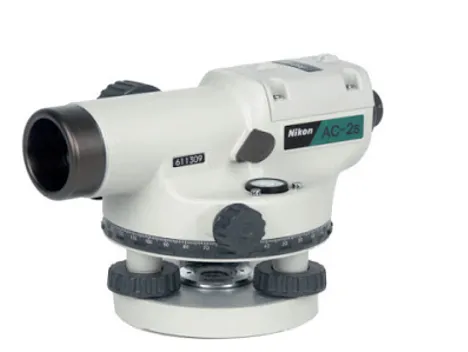
DIFFERENT TYPES OF LEVELS
(1). The Dumpy Level: The telescope of the dumpy level is rigidly fixed to its supports. It cannot remove from its supports nor can it be rotated about its longitudinal axis. The instrument is stable and retains its permanent adjustment for a long time (Fig. - L.3 and L.4).

Fig. L.3

Fig.- L.4
(2). The Wye Level (Y-Level): The telescope is held in two ‘Y’ supports. It can be remove from supports and reversed from one end of the telescope to the other end. The ‘Y’ supports consist of two curved clips which may be raised. Those the telescope can be rotated about its longitudinal axis (Fig. - L.5).

Fig.- L.5
(3). Cook’s Reversible Level: This is a combination of the dumpy level and ‘Y’ level. It is supported by two rigid sockets. The telescope can be rotated about its longitudinal axis, withdrawn from the socket and replaced from one end of the telescope to the other end (Fig. - L.6).

Fig.- L.6
(4). Cushing’s Level: The telescope cannot be removed from the sockets and rotated about its longitudinal axis. The eye-piece and object glass are removable and can be interchanged from one end of the telescope to the other end (Fig. - L.7).

Fig. - L.7
(5). The Modern Tilting Level: The telescope can be tilted slightly about its horizontal axis with the help of its tilting screw. In this instrument the line of collimation is made horizontal for each observation by means of the tilting screw (Fig. - L.8).

Fig.- L.8
(6). The Automatic Level: This is also known as the self-aligning level. This instrument leveled automatically within a certain tilt range by means of a compensating device (the tilt compensator). telescope can be tilted slightly about its horizontal axis with the help of its tilting screw. In this instrument the line of collimation is made horizontal for each observation by means of the tilting screw (Fig. - L.9).
